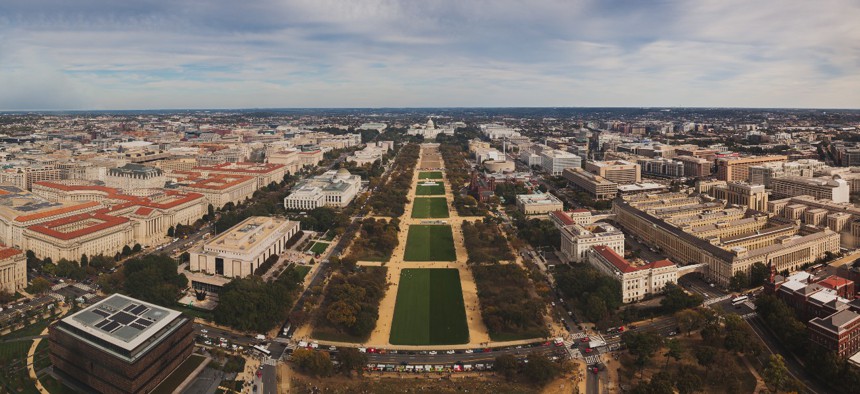Smithsonian Leaders and Union Representatives Disagree Over Museum Openings
Many Smithsonian facilities are located in Washington, D.C., which has experienced a surge in coronavirus cases due to the spread of the Omicron variant.
With the surge of the Omicron variant the Smithsonian Institution and its union are once again at odds over coronavirus health and safety precautions.
The Smithsonian announced on December 28 and 29 that five Smithsonian museums would be temporarily closed due to COVID-19 outbreaks among staff. Then on January 3, the Smithsonian announced modified schedule changes for January 5 to 17 “preparing for unprecedented staff shortages in the coming weeks due to the surge in COVID-19 cases.” The National Air and Space Museum and the Anacostia Community Museum are the only ones that will be closed through Jan. 17.
“This modified schedule allows the Smithsonian to reposition key staff across its museums as needed while ensuring that museums remain open to the public each day of the week,” said a press release. “Museums may have limited public entrances, and some exhibition spaces may be closed during this period to reduce the number of on-site staff needed…During these two weeks, Smithsonian leadership will assess the situation and staffing needs and adjust the schedule as needed.”
Public health officials announced the first known case of the Omicron variant in the United States on December 1 after it was first discovered in South Africa, and now this variant accounts for about 95% of cases in the country, Dr. Rochelle Walensky, director of the Centers for Disease Control and Prevention, said during a briefing on Wednesday. Cases surged nationwide, especially in Washington, D.C.––where many of the Smithsonian facilities are situated. While Omicron is highly contagious the majority of cases in those who are vaccinated and boosted have been mild. Government Executive first reported back in April some of the contentions between the Smithsonian management and union.
Reggie Booth, president of the American Federation of Government Employees Local 2463, which represents Smithsonian employees, said in an email to members on December 29, obtained by Government Executive, that he was been in contact with upper management since before the holidays about the anticipated vast number of visitors between Christmas and New Years who could possibly be asymptomatic spreaders of COVID-19. “Each year since COVID hit the scene, the agency has refused to work side by side with the union to protect the bargaining staff,” Booth wrote. “The union has every reason to believe this is the primary reason for the high number of COVID cases the museums continue to be plagued with.”
The new modified schedule “will create more problems because visitors will now have [fewer] museums to visit and spread out in,” Booth told Government Executive on Monday. “Decreased visitation hours will make more visitors rush down during a shorter period of time, causing more crowding,” he said. He also said the museums that had been temporarily closed should be closed for longer.
Other concerns he raised were: employees have to use their own leave when they are sent home for testing positive for COVID-19 and the number of positive cases for contract workers who work alongside Smithsonian security are not included in the Smithsonian’s count.
In an update on Thursday, Booth said the Smithsonian has apologized to bargaining unit employees for a “delay in notifying employees during the contact tracing process, which is helping to spread the virus, but the buildings still remain open” and his concerns persist.
Alexandria Fairchild, spokesperson for the Smithsonian, told Government Executive the institution does not discuss labor union negotiations or details about collective bargaining agreements; however, she was able to give a response to the other issues raised by the union.
“It’s important to note that our decision to modify the operating schedule of museums was not simply based on having a specific number of staff out,” Fairchild said on Tuesday. “Like many other organizations, we’ve seen an uptick in the number of reported cases among staff in the past few weeks, and based on case numbers across the country, expect those numbers to remain high. We made a forward-looking decision that allows us the flexibility to reposition essential staff across museums as needed. The goal is to maintain the mission of Smithsonian, balanced with staff safety, and avoid needing to make operational decisions on short notice.”
Fairchild said reporting on positive COVID-19 cases is done on a voluntary basis. “Based on our current reported numbers for December we had over 220 cases across the entire Smithsonian, which includes our employees, volunteers, interns and contract staff working on and offsite,” she said. “We are continuing to receive updated information from over the last few days.”
As for the vaccinations, the Smithsonian wasn’t technically required to follow President Biden’s vaccine mandate for federal employees, said Fairchild, as it is “considered unique in the federal establishment” because it is “not an executive branch agency and does not exercise regulatory powers, except over its own buildings and grounds,” according to the institution’s website. However, it implemented its own mandate with the same timeframe. “Over 93% of our workforce are in compliance, and we continue to receive proof of vaccination,” Fairchild said.








